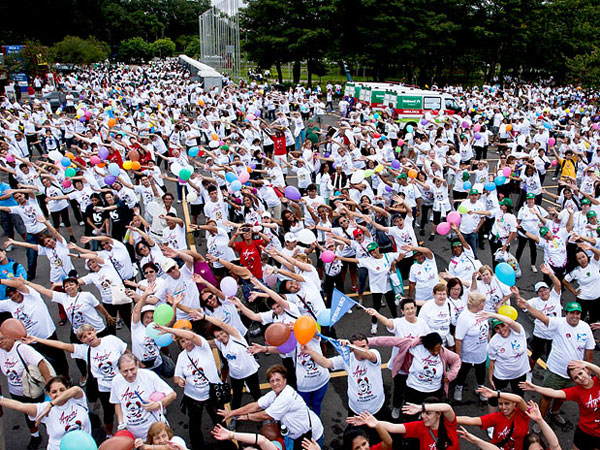Guest blog by Ann Gates (@exerciseworks)
Call to action for ALL heath professionals:
Exercise direction to patients is emerging as an essential clinical skill in the prevention and treatment of both acute and chronic lifestyle diseases. Dr Bob Sallis MD has long advocated that regular exercise is a medical ‘vital sign’ in assessing and directing a patient with a lifestyle disease to enjoying exercise as a medicine.
36 million people around the world die from preventable lifestyle diseases (non communicable diseases; NCDs) such as heart disease, cancer, obesity, diabetes and mental health problems. This means that 36 MILLION people would benefit from exercise advice and support in preventing and treating these diseases.
Just one in three doctors gives exercise advice as part of every consultation to their patients.
If EVERY doctor and EVERY health professional is able to ‘direct’ and ‘support’ patients to regular exercise, as part of every consultation, then the health and economic consequences of inactivity and sedentary behaviour could start to be addressed. Patients could then be supported, proactively, to better lifelong health. NCDs will cost health economies $47 trillion by 2030. This is an unsustainable approach to health care services.
When doctors and health professionals give advice as part of the consultation, patients don’t question that advice and direction. For example, a patient needing warfarin or aspirin in the treatment of atrial fibrillation doesn’t debate the clinical outcomes of that decision: they may discuss NNT’s and NNHs, but generally the patient will follow the doctor’s prescription.
If physiotherapists are giving advice to help a patient breathe easier, the patient will generally follow the advice to improve their symptoms.
This should come as no surprise to health professionals who use the ‘art of a medical direction’ in guiding and motivating patients to better health: this can be used to great success in primary care, secondary care, health clinics, communities, cities or nations. Follow this link for more information.
What can we do?
World Physical Activity Day on the 6th April 2012 is an opportunity for sports and exercise professionals to lead the way on global exercise advice. Every health professional should give exercise advice to patients and the public. The medicine behind exercise as a critical public health intervention is now no longer debatable. Here is some evidence.
Adult patients should be advised to ‘enjoy’ stamina or endurance exercises for the minimum of 30 minutes, on at least five days of the week (ensuring they get slightly breathless).
Strength, flexibility and balance exercises should be advised twice a week. Age specific UK physical activity guidelines can be found here.
For World Physical Activity Day 6th April 2012: Make a difference to every consultation: include exercise advice, every patient!
***************************************************************
Ann Gates BPharm(Hons) MRPharmS
Personal Trainer, Chronic Disease Exercise Specialist, BACPR Exercise Instructor.
email: ann@exercise-works.org
